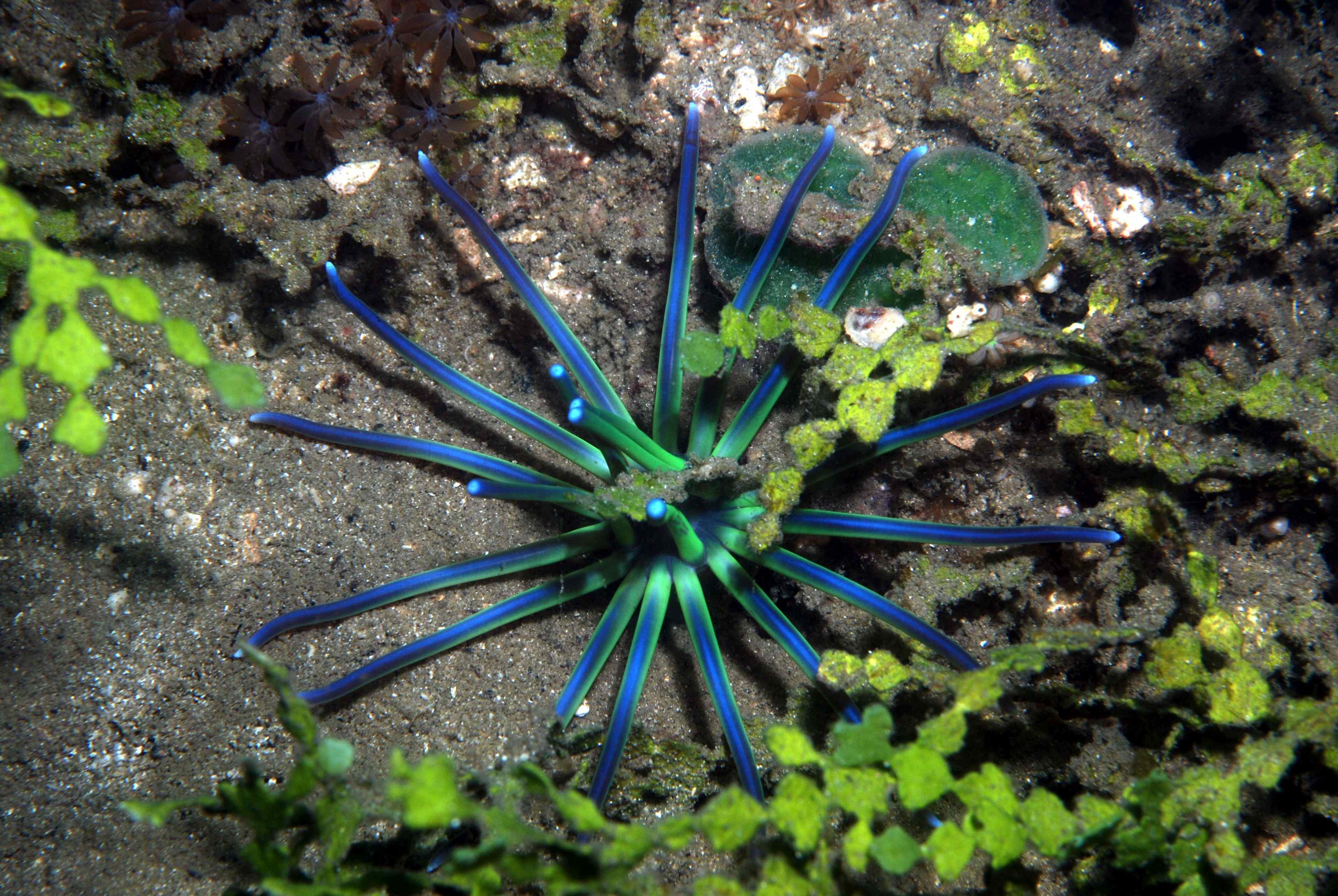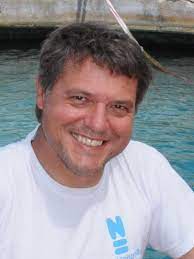Underwater wonderland
In November, coral researcher Bert Hoeksema from Naturalis Biodiversity Center gave his inaugural speech in Groningen as Honorary Professor of Tropical Marine Biodiversity. Discovering life on and around coral reefs is his passion. He then uses this knowledge to improve protection of the reefs. ‘You never know what you’re going to encounter below the surface. That’s what makes it so fascinating.’
Coral reefs are one of the most diversely populated ecosystems on Earth. Micro-organisms, algae, polyps, and jellyfish; flatworms and starfish; mini seahorses, sea cucumbers, and colourful sea slugs: every dive results in a new, unexpected encounter. ‘The world is now aware that the survival of many of these species is under threat. They need protection, but we still don’t know how many species we’re talking about.’ Bert Hoeksema made this claim in his inaugural speech at the University of Groningen on 16 November. Although he has been an Honorary Professor of Tropical Marine Biodiversity since June 2019, his inaugural speech was postponed twice due to the COVID-19 restrictions.
Why have you taken this professorship in Groningen?
‘Working with students is one of the best parts of my job. I love taking them on expeditions, inspiring them with my inquisitiveness, arranging interesting placements for them, helping them to publish articles about new discoveries. I already do this, but being an honorary professor makes it easier for me to structure this aspect of my work. It’s also important that Naturalis has professors at various universities around the Netherlands. This makes the links more official, and simplifies collaboration. Why Groningen? Because the UG is a leading light in marine biology. It’s where I come from, which makes it even more special.’
Your inaugural lecture was entitled ‘The hidden biodiversity of coral reefs’. Why ‘hidden’?
‘We are unaware of most of what goes on below the surface of our oceans. It is relatively difficult to study, particularly at great depths. And it often involves minuscule organisms. Single-celled organisms, but also polyps barely measuring a millimetre, for example. Many organisms have still not been discovered because they are so well camouflaged or look exactly like another organism. Some sea anemones, for example, are the spitting image of corals. This is potentially dangerous for divers and fishermen, as sea anemones are highly poisonous. We recently found out that that a prawn from the Caribbean, which you cannot tell apart from a prawn that lives in the Indian and Pacific Oceans, is actually a separate species. Some 230,000 marine species have already been identified, but we estimate that a third to two-thirds of all species have not yet been discovered.’

Why did you decide to specialize in coral?
‘Because of the enormous variety. When I’m diving, it never ceases to amaze me. And because the system is so unbelievably complex. Some fish, for example, are only found close to one particular type of coral. I find this dependence fascinating. How did it evolve? And how have these species, which are so co-dependent, managed to spread all around the world? What will happen to them now so much of our coral has become endangered due to the oceans warming up and destructive fishing practices?’
Can your research be put to use directly?
‘Sometimes. If a specific coral turns out to be highly important in terms of biodiversity, then you must protect it as a priority. This research into underwater treasures appeals to a wider public, from divers and aquarium lovers to keen travellers and nature buffs. Everyone finds it fascinating, once they know about it. It’s important to show what is down there, beneath the surface, and how everything relates to each other. You can only fully understand the impact of human behaviour if you understand what is going on. It makes you realize that we may lose countless species before we have even discovered them. And that an ecosystem of this complexity will not recover overnight.’
This was one of the conclusions of your research into artificial reefs, wasn’t it? Could you tell us about that?
‘Two of my students carried out research on an old longitudinal dike that had been devastated by a storm in Sint Eustatius. They were studying the development of coral and the associated fauna. Their research revealed that the biodiversity on an artificial reef of this kind is nothing like the biodiversity found on natural reefs. Even after a few centuries. People sometimes ask: when will a reef like this reach maturity? When will it be identical to a natural reef? My answer is simple: never. Mainly because the surface is too regular. It’s exactly all those hollows and crevices that make a natural reef so diverse.’
So, what about reef restoration projects, whereby coral is cultivated on artificial structures?
‘If I’m honest, I don’t consider that to be reef restoration. Researchers often focus on one or two species of coral, which are easy to cultivate. They do this in shallow water. These projects attract a lot of attention, but they are so far removed from the natural complexity of a reef. I don’t think that this is the way to save coral reefs.’
So what is?
‘Tackling the problem at the root. Less pollution, less destructive fishery, and of course, addressing the causes of climate change. More and more coral is dying off, due to warmer water, disease, or a combination of the two. We’re not quite sure. All knowledge is useful, which is why we are working on this. We are working alongside nature organizations, on Bonaire and Borneo, for example: they need to know what to protect, and where to find the most vulnerable reefs. It’s an enormous help if you can show people – tourists and local communities – what lives on and around a reef.’
Do you have any specific plans for your professorship?
‘I tend not to plan long-term. So much just seems to come my way that I’m always busy doing things I like. Fieldwork, publishing, working with students. Whenever I get an email from a colleague asking me to do joint research into a particular species, I always say yes if involves coral. It keeps me on my toes. We discover a new species, or a previously unknown link to another species. A prawn hitching a ride on a snail, for example, like riding a horse. You never know what you’re going to see when you dive on a coral reef. And I get to share this with students, or with local amateur divers, and we publish articles together… People sometimes ask me if I have a favourite dive site. I always reply: the next one. There’s always something new to see. That constant amazement you feel is simply the best feeling in the world.’

Bert Hoeksema (1957) studied Marine Biology in Groningen and was awarded a PhD by Leiden University. He has been a coral researcher in Leiden at the Naturalis Biodiversity Center (formerly the Museum of Natural History) since 1982. He was also appointed as an Honorary Professor at the UG in 2019. His research focuses on the the taxonomy, ecology, evolution, and biodiversity of coral reefs, a task for which he travels the world.
Text by Nienke Beintema
| Last modified: | 22 February 2022 3.32 p.m. |
More news
-
04 July 2025
University of Groningen awards different prizes during Ceremony of Merits
The UG awarded different prizes to excellent researchers and students during the Ceremony of Merits on 4 July 2025.
-
02 July 2025
Relinde Weil reappointed as a member of the Supervisory Board UG
The Minister of Education has reappointed Relinde Weil for a second term as a member of the Supervisory Board of the University of Groningen.
